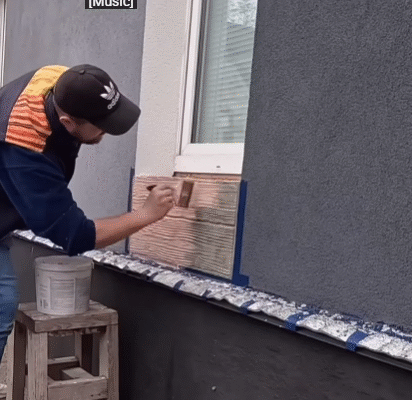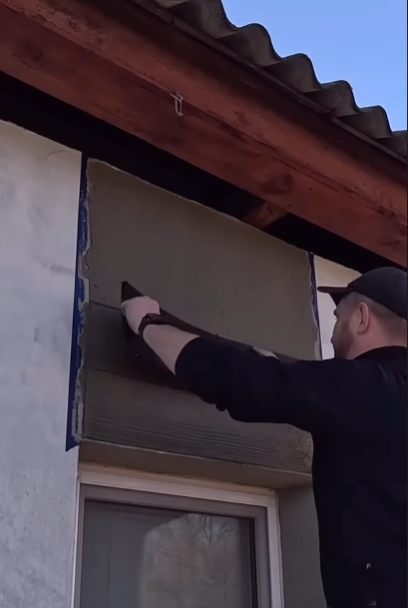
When it comes to giving buildings a modern, textured, and aesthetically pleasing look, one design technique has captured the attention of architects, designers, and builders alike — the “stamp of the board on the facade.” This creative and cost-effective architectural detail adds depth, character, and a unique visual appeal to both residential and commercial buildings. Whether it’s for a new construction project or a renovation, this stamped finish transforms ordinary concrete or plaster walls into something extraordinary.
What is the “Stamp of the Board” Technique?
The term “stamp of the board” refers to a decorative concrete or plaster finish that mimics the appearance of wooden planks on a building’s exterior wall — the facade. This effect is achieved by using real wooden boards or specially designed molds to imprint the texture and grain of wood into wet concrete or render before it hardens.
Once dried and cured, the result is a durable, low-maintenance surface that looks like weathered or stained wood but has the longevity and strength of cement or synthetic material. This illusion of wood can be enhanced through coloring techniques, sealants, and even faux knots to make it indistinguishable from real timber.
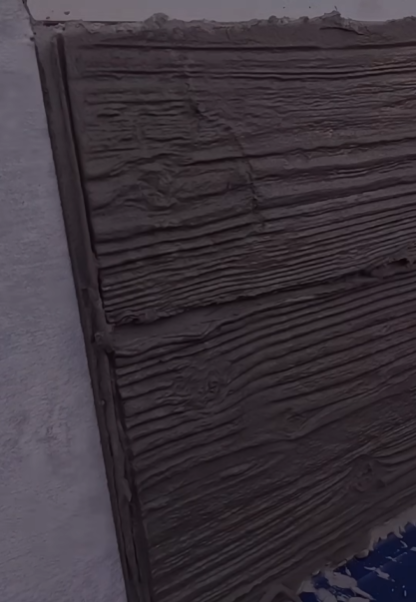
Why Choose a Stamped Board Finish?
- Aesthetic Appeal
The stamped board effect adds a rustic, natural, or industrial charm depending on how it’s applied and finished. It complements modern architecture, especially minimalistic or raw concrete structures, by softening the appearance without losing the edgy vibe. - Durability
Unlike real wood, which can rot, warp, or be affected by pests and weather, a concrete or plaster surface stamped with a board texture is much more resilient. It requires little maintenance over time, making it ideal for building exteriors. - Sustainability
Using concrete or render stamped with wood textures reduces the need for natural timber, helping to preserve forests and reduce carbon footprint. It’s an environmentally friendly choice for green builders. - Cost-Effective
Achieving a high-end wooden facade look can be expensive when using actual wood. However, stamped concrete provides a similar visual at a fraction of the cost, especially when considering long-term upkeep.
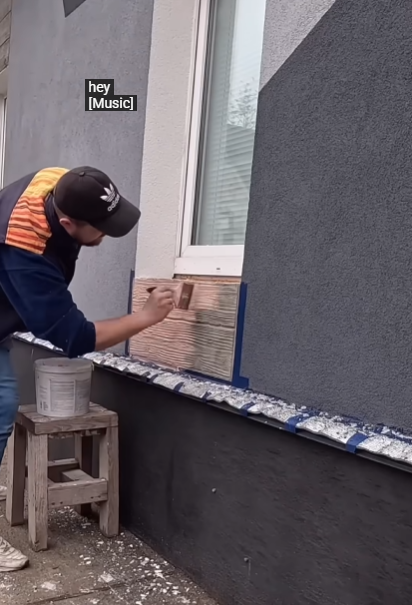
How Is the Board Stamping Process Done?
Creating the “stamp of the board” on a facade involves several steps and must be done with precision to ensure the design looks natural and cohesive.
1. Preparation of the Surface
The first step is preparing the facade surface, which may be made of concrete, stucco, or another suitable material. The surface must be clean, level, and slightly moist to accept the stamping pattern effectively.
2. Setting Up the Formwork
If working with fresh concrete, formwork is installed using wooden planks or synthetic board molds. These forms define the boundaries and hold the material in place while the stamping occurs. The wooden planks may be treated or textured to give the desired grain pattern.
3. Applying the Concrete or Render
The next step involves applying a layer of wet concrete, plaster, or rendering compound to the surface. The thickness depends on the final desired effect — generally, enough material is applied to capture the full texture of the stamping boards.
4. Stamping the Surface
Before the material dries, the stamping process begins. Boards or molds are pressed into the surface, transferring their pattern. Care is taken to ensure alignment and avoid repetition, so the finish looks authentic. Some artists vary board widths, add gaps, or even include “screw head” impressions for realism.
5. Coloring and Sealing
After the surface sets, coloring agents — such as acid stains, oxide pigments, or water-based dyes — are applied to bring out the wood effect. The final step is sealing the facade with a protective layer to preserve the color and enhance durability against weather.
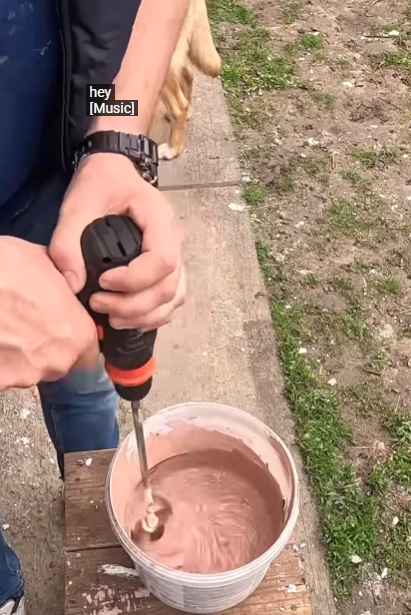
Variations and Styles
The beauty of the stamped board facade is its versatility. Depending on the design vision, the technique can simulate many types of wood, including:
- Weathered barn wood
- Shiplap or tongue-and-groove planks
- Smooth cedar or pine boards
- Charred wood (Shou Sugi Ban style)
Moreover, builders can experiment with vertical, horizontal, or diagonal board layouts, creating a dynamic interplay of lines and shadows.
Ideal Applications
The stamped board effect is suitable for a wide range of building styles and purposes:
- Modern Homes
Adds texture and warmth to otherwise cold concrete surfaces. - Commercial Buildings
Creates a unique branding identity while remaining low-maintenance. - Garden Walls & Fences
Provides a natural appearance that blends with outdoor landscapes. - Interior Feature Walls
A growing trend involves using this technique indoors for accent walls in living rooms, lobbies, or hallways
Maintenance and Longevity
Once installed and sealed properly, a stamped board facade requires minimal maintenance. Occasional cleaning with water and a mild detergent is enough to keep it looking fresh. Depending on exposure to sun and rain, resealing every 5–7 years is recommended to maintain its protective layer and vibrancy.

DIY or Professional?
While the technique may seem straightforward, it demands experience to execute well. For small projects or experienced DIYers, kits and molds are available. However, for large facades or high-visibility areas, hiring a professional with knowledge of stamping, concrete behavior, and artistic finishing ensures a flawless result.
Real-World Examples
In recent years, architectural firms have embraced the board stamp finish in a variety of projects:
- Urban apartments using vertical board impressions for a sleek, industrial look.
- Eco-lodges blending into forest surroundings with natural-looking faux wood facades.
- Public buildings showcasing creative patterns, grain direction shifts, and embedded logos.
These examples prove that the stamped board technique is more than a trend — it’s a timeless, flexible design option that bridges modernity with the natural world.

Final Thoughts
The “stamp of the board on the facade” is more than just a construction technique — it’s an art form. It blends the rugged durability of concrete with the warm, comforting aesthetics of wood. Whether you’re building a minimalist home, a nature-inspired retreat, or a sleek urban structure, this method offers the perfect harmony of function and beauty.
By choosing this finish, you’re not only saving on materials and maintenance but also contributing to sustainable design without sacrificing visual appeal. In a world where appearance and performance both matter, the stamped board facade truly offers the best of both worlds.
